
On this “Face the Nation” broadcast, moderated by Margaret Brennan:
- National Security Adviser Jake Sullivan
- General Joseph Votel
- Sen. J.D. Vance, Republican of Ohio
- Robert Mardini, director-general of the International Committee of Red Cross
Click here to browse full transcripts of “Fac the Nation.”
MARGARET BRENNAN: Good morning, and welcome to Face the Nation. I’m Margaret Brennan in Washington.
There has been a significant escalation in the fighting between Israel and Hamas in the last 48 hours. In Gaza, the humanitarian situation has deteriorated even further. There has been no pause to let aid trucks in days. Some communication systems have been restored today following a blackout that started on Friday.
Meanwhile, there have been more attacks from Iran-backed militia groups targeting U.S. forces in Iraq and Syria. The Eisenhower carrier strike group has crossed into the Mediterranean Sea, where it will join with other U.S. Navy assets already in the region.
We begin this morning in Tel Aviv with our Charlie D’Agata.
(Begin VT)
CHARLIE D’AGATA (voice-over): What the Israeli government calls its second stage of the war began with its fiercest aerial onslaught yet, then an artillery barrage, according to Israeli Defense Forces video and tanks, flanked by soldiers on foot, rolling inside Gaza, without pulling back this time, even if Israeli officials stopped short of calling it an invasion,
Prime Minister Benjamin Netanyahu called it Israel’s second war of independence.
(PRIME MINISTER BENJAMIN NETANYAHU SPEAKING IN FOREIGN LANGUAGE)
CHARLIE D’AGATA: “The war inside the Gaza Strip will be long and difficult,” he said, “and we are ready for it.”
Addressing whether what aid agencies call the catastrophic crisis unfolding inside Gaza constitutes a war crime, he said:
(PRIME MINISTER BENJAMIN NETANYAHU SPEAKING IN FOREIGN LANGUAGE)
CHARLIE D’AGATA: “The IDF is the most moral army in the world. The IDF does everything to avoid harming those who are not involved.”
But each airstrike and artillery shell brings more death and destruction for more than two million people with nearly nowhere to take shelter. The Hamas-run Health Ministry now says more than 8,000 people have been killed, around half of them children.
(WOMAN SPEAKING IN FOREIGN LANGUAGE)
CHARLIE D’AGATA: A mother mourns, saying: “Leave him in my arms.”
There are fears for those held beneath Gaza too. Even before the wave of airstrikes and the heavy bombardment that continues, there was growing concern for more than 200 hostages still trapped inside Gaza, making things much more complicated for special forces hostage rescue teams, former Mossad intelligence chief Haim Tomer told us.
Do they have the intelligence or the equipment in the tunneling system in the middle of all of this chaos to find out where these hostages are being kept?
HAIM TOMER (Former Israeli Intelligence Chief): To be very frank and direct, it’s kind of a mission impossible. To find the hostages, intelligence-wise, is very, very, very difficult, almost on the line of impossible.
CHARLIE D’AGATA: Hamas has still been able to retaliate, missiles hitting a Tel Aviv neighborhood.
And while the Israeli government’s stated goal is the total destruction of Hamas and the return of the hostages, the long-term strategy is less clear.
Former Vice Prime Minister Tzipi Livni.
What does Gaza look like after a ground invasion?
TZIPI LIVNI (Former Israeli Vice Prime Minister): Well, I think that we should think about it right now, not to wait until the end of the ground maneuver operation, look at the situation, and think not just about the next day, but about the next year, next 10 years, think about the future.
Now, it’s clear, should be clear, Israel doesn’t want to reoccupy Gaza.
CHARLIE D’AGATA: But how Israel’s new phase of the war is waged, how long, how many more people may die will determine whether it remains confined to this tragic little corner of the Middle East or ignites the region.
(End VT)
CHARLIE D’AGATA: This morning, the U.N. raised alarm that civil order is starting to break down inside Gaza, thousands of people storming their warehouses and distribution centers, in a desperate need for wheat, flour and hygiene supplies – Margaret.
MARGARET BRENNAN: We go now to White House National Security Adviser Jake Sullivan.
Jake, good morning to you.
JAKE SULLIVAN (U.S. National Security Adviser): Good morning, Margaret.
MARGARET BRENNAN: Does the U.S. know if the roughly 500 to 600 Americans in Gaza have survived the past 23 days of bombing, and have the hostages?
NATIONAL SECURITY ADVISER JAKE SULLIVAN: We are in regular contact with most of the Americans who are in Gaza.
We can’t say every single one, but all of the ones who reach out to us, we follow up with on a regular basis, even sometimes a daily basis. And so we know that many of them are still there, still waiting to get out. And we are working actively to try to make that happen.
The challenge right now, Margaret, is that the Egyptians are prepared to let Americans and other foreign nationals out of Gaza. The Israelis have no issue with that. But Hamas is preventing their departure and making a series of demands. We’re trying to work through that to create a circumstance where all of the Americans who are in Gaza are able to get out.
MARGARET BRENNAN: Let me ask you about Israel and how it has explained its mission to the U.S. government.
Saturday, their military said it committed it killed a Hamas leader who had overseen the drone strikes and the paragliders who carried out that horrific attack on October 7. They’d already announced that they’d killed the commander of forces responsible for the massacre at kibbutz Nirim and another key Hamas commander.
Have they told you yet at which point they will declare this mission a success?
NATIONAL SECURITY ADVISER JAKE SULLIVAN: Well, they have declared – they have told us in broad terms that making sure that Hamas can never again threaten Israel in the way it threatened Israel before is their core strategic objective in this conflict.
But in terms of what the specific milestones are, that is something that ultimately is up to Israel. This is their military operation. They will make that decision. And we will continue to ask the hard questions of them, Margaret, that we would ask of ourselves in a military operation like this.
What exactly are the objectives? How are the means matched to the objectives? And how will this evolve over time? That’s a conversation we’ve been having. It’s a conversation we will continue to have in the days ahead.
MARGARET BRENNAN: So it sounds like that endgame has not been specifically laid out.
Do you expect, at this point, a full-scale Israeli invasion and occupation of Gaza, or is that off the table?
NATIONAL SECURITY ADVISER JAKE SULLIVAN: Well, I will let the Israeli Defense Forces speak to what their operational planning is. And I’m not going to characterize it on television today.
What I will say is that the United States has been very focused on a core challenge here, which is that Hamas is using civilians as human shields. They’re hiding behind civilians. They’re hiding among civilians. They’re putting rockets and other terrorist infrastructure in civilian areas.
That creates an added burden for the Israeli Defense Forces. But it does not lessen their responsibility to distinguish between terrorists and innocent civilians and to protect the lives of innocent civilians as they conduct this military operation. That’s true of striking from the air. It is true of going in on the ground. And this is something that we talk about with the Israelis on a daily basis.
MARGARET BRENNAN: I understand, but I also understand now that there has been a tremendous amount of death in Gaza.
I know President Biden said the other day he has no confidence in the numbers presented by Palestinian authorities in Gaza. But I wonder, at which point does the U.S. say there needs to be some cessation of violence?
NATIONAL SECURITY ADVISER JAKE SULLIVAN: Well, first, President Biden was making a straightforward point, which is that the particular institution, the Gaza Health Ministry, which is run by Hamas, we can’t take what Hamas says at face value.
But we have also been clear repeatedly that we have seen thousands of Palestinian civilians killed in this conflict, that that is a tragedy, each and every one of those individual deaths is a tragedy, and that the life of every civilian, Palestinian, Israeli, anyone, is sacred and has to be protected.
And it is important for Israel to distinguish between going after terrorist targets to take out terrorists who continue to threaten Israel and going after civilians. That is an obligation and a responsibility for Israel.
And it’s something that we will continue to press them on. We also believe that there should be humanitarian pauses to get hostages out, potentially to get aid in. And we will continue to work toward that end.
MARGARET BRENNAN: I know – Jake, I have heard this. And, frankly, some of the language is a little contradictory, or it sounds that way, because Secretary Blinken said, even a temporary pause in bombing would benefit Hamas. He said that on this program last week.
Then, a few days later, he went to the U.N. and said a humanitarian pause must be considered. Then the U.S. at the U.N. voted against a humanitarian truce.
So, what exactly is the Biden administration calling for here? Because everyone from the pope to the World Health Organization to the U.N. is saying, just stop the violence for a period of time, at least.
NATIONAL SECURITY ADVISER JAKE SULLIVAN: Well, what a lot of people are calling for is just a stop to Israeli military action against terrorists, period, just stop, no more, Israel cannot go after terrorists who conducted this largest massacre of Jews since the Holocaust and who continue to fire rockets and continue to attack Israel.
We have taken the position that Israel has a right to defend itself against terrorist attacks. That is different from what Secretary Blinken spoke about, which was a humanitarian pause, a pause in the fighting, for example, so that there’s a period of time where there can be safe passage of hostages.
MARGARET BRENNAN: So, just hours?
NATIONAL SECURITY ADVISER JAKE SULLIVAN: President Biden and his whole team are working extremely hard to get those hostages out.
We will continue to do that. I won’t put a time frame on it. But I will say that, given the number of hostages, it would be more than just hours if we were able to secure their release, and we are actively working to secure their release.
And, similarly, when Secretary Blinken said that any pause in fighting benefits Hamas, that’s a reality. There are a lot of complicated realities in this. A humanitarian pause would be a good thing to get hostages out, but you can bet that Hamas will try to use that time to their advantage as well.
These are the things that Israel is trying to grapple with.
MARGARET BRENNAN: So to that point, Benny Gantz, who is part of the Netanyahu war cabinet, said: “We will listen to our friends, but we will act in accordance with what is right for us.”
Is there any daylight, Jake, between the U.S. and the Netanyahu government right now?
NATIONAL SECURITY ADVISER JAKE SULLIVAN: We have conversations, like friends do, on the hard questions that I talked about before, on issues associated with humanitarian aid, on distinguishing between terrorists and innocent civilians, on how Israel is thinking through its military operation.
Those conversations happen multiple times a day. They happen between the president and the prime minister. They happen by the secretary of state, secretary of defense, myself, other senior members of our administration. We talk candidly. We talk directly. We share our views in an unvarnished way, and we will continue to do that.
But sitting here in public, I will just say that the United States is going to make its principles and propositions absolutely clear, including the sanctity of innocent human life.
MARGARET BRENNAN: Yes.
NATIONAL SECURITY ADVISER JAKE SULLIVAN: And then we will continue to provide our advice to Israel in private.
MARGARET BRENNAN: I understand this is another country’s decisions here, but the U.S. gives more than $3 billion a year in aid to Israel.
Some of those weapons being used in Gaza are purchased or helped to be purchased with U.S. taxpayer funds. So whether it’s intended or not, to some of the world, it looks like the U.S. is endorsing all of what Israel is doing here.
Are you at all asking the military to be more limited in its tactics or more strategic?
NATIONAL SECURITY ADVISER JAKE SULLIVAN: The United States of America, when we transfer weapons to another country, whether it’s Israel or anyone else, requests, requires an assurance that those weapons will be used in accordance with the law of armed conflict.
And we seek accountability to ensure that that is the case. We will continue to do that. We will also work around the clock to try to make sure that lifesaving humanitarian assistance gets to people in need.
But, fundamentally, what President Biden says, how he has described things, from the point of view of civilian protection, access to lifesaving goods and medicine for civilians, this is where the United States stands. And we do not stand for the killing of innocent people, whether it be Palestinian, Israeli or otherwise. And we weep and grieve for every lost life, and will continue to do so.
MARGARET BRENNAN: Is that going to be your message to Saudi Arabia’s defense minister when you meet tomorrow?
I know you know a number of Arab partners are concerned about the level of violence in Gaza right now.
NATIONAL SECURITY ADVISER JAKE SULLIVAN: We’ve been talking to our Arab partners, including to Saudi Arabia, about the unfolding crisis in Gaza.
We listen to them carefully. We share our perspective. And, yes, we will have the opportunity to dive deep, not just on what is happening today, but on what tomorrow could bring, because what President Biden said in the Rose Garden this past week was that we can’t go back to October 6.
That means Hamas can no longer terrorize Israel, but it also means that there needs to be a political horizon for the Palestinian people, two states for two peoples, the right of Palestinians to live in safety, dignity and equality. And we’re going to work towards that.
And Arab states, including Saudi Arabia, have a role and a responsibility in that as well.
MARGARET BRENNAN: Before I let you go, do you now believe Iran is deterred?
NATIONAL SECURITY ADVISER JAKE SULLIVAN: Well, what I believe is that the United States will follow through on what we say we’re going to do.
We said that, if our troops were attacked, we would respond. We responded. If they’re attacked again, we will respond again. And we are vigilant, because we are seeing elevated threats against our forces throughout the region and an elevated risk of this conflict spreading to other parts of the region. We are doing everything in our power to deter and prevent that.
But I’m not going to predict what the future brings, other than to say that, if we are attacked, we will respond.
MARGARET BRENNAN: Jake Sullivan, thank you for your time.
And Face the Nation will be back in one minute. Stay with us.
(ANNOUNCEMENTS)
MARGARET BRENNAN: We go now to General Joseph Votel, former CENTCOM commander overseeing operations in the Middle East.
General, it’s good to have you with us.
I want to pick up where we left off with the national security adviser. He said: “The U.S. has elevated threats against U.S. forces, elevated risk of the conflict spreading.”
What are the trigger points you are concerned about?
GEN. JOSEPH VOTEL (RET.) (Former Commander, U.S. Central Command): Thanks. Good morning, Margaret. It’s good to be with you.
So, I think the thing that I have been concerned about and – and probably many have been concerned about is that any miscalculation along the line can move this to a different level. So, an attack on – on an American installation, whether it’s military or diplomatic or commercial, that causes casualties, significant casualties and death, I think, could – could significantly change the calculus – calculus for us.
And, certainly, a much broader attack by the so-called Iranian threat network here, whether it’s Hezbollah or whether it’s Iranian-aligned militia groups in Syria that broaden the conflict, I think these are all aspects that could – that could lead to a widening of the – of the conflict.
MARGARET BRENNAN: There have already been 20 militia attacks on U.S. forces in Syria and Iraq. There are about 19 servicepeople who suffered from traumatic brain injuries. One contractor died.
How do you understand that level of aggression?
GEN. JOSEPH VOTEL: Well, I – it’s very clear that, I mean, Iran is behind this.
Their – their – their elements in – in Iraq and – and to some extent in Syria are perpetrating these attacks. And, as the national security adviser said, we’ve got to – we’ve got to hold them accountable for that. And so it is critically important to not just be responsive, but to be directly responsive and to be forceful in our manner.
Ultimately, what we need to do is compel these elements and Iran, who is behind all of this, to stop this type of action right now.
MARGARET BRENNAN: In Israel, their prime minister said yesterday, this is going to be a long war and we’re in the second phase.
You just heard Jake Sullivan say the U.S. is still asking questions like, what exactly are the objectives?
How do you describe what the IDF is doing right now in Gaza?
GEN. JOSEPH VOTEL: Well, I think what the IDF is doing is – and I think that the task they’ve probably been given is to destroy the war-making capacity of Hamas.
So, they are going after command-and-control locations. They’re going after logistics locations. They’re going after headquarters locations. And they’re going after the likely sites that – that Hamas would use to perpetrate missile strikes or rocket strikes onto – onto Israel.
So, from my perspective, it’s pretty clear what the – what the Israeli military is doing. And I think their job is to – is to – is to destroy that war-making capacity of Hamas.
MARGARET BRENNAN: Should they stop once capturing Gaza City?
GEN. JOSEPH VOTEL: Well, again, I think they’ll have to make an assessment of – of – of their progress.
Most of the – most of the effort now seems to be in the north – northern part of Gaza and around Gaza City, which I think, as – as most people who study this will recognize, is the – are the primary areas where – where Hamas operates.
So, they’ve definitely directed their operations against the places where Hamas is. And – and I think they’re – they’re actually approaching this in an incremental manner. I think we’ve seen introduction of additional forces over the last couple of days. So, they’re thinking about it that way.
And, of course, like any military force would do, they have to take assessments of their – of their progress as they – as they continue with their operations.
MARGARET BRENNAN: There is concern about another front here outside of Gaza.
And I know, on Wednesday, President Biden said he is alarmed by – quote – “extremist settlers attacking Palestinians in the West Bank” in – quote – “places they’re entitled to be.”
One of Israel’s government ministers, Ben-Gvir, has video of him arming Israeli civilians with M16 and M4 assault rifles. How concerned are you about an uptick in violence in the West Bank?
GEN. JOSEPH VOTEL: Well, again, I think this goes back to what we just talked about a few moments ago. And that’s the miscalculations.
I mean, this – this – this, it’s a – it’s a tinderbox. And so, when you have people that are scared, they have weapons, they’re trying to protect themselves, then the chances for something going wrong in this, I think, increase, so yes.
And – and – and – and the rhetoric has been – has been very strong about this, about the vulnerability and the fact that – that Israeli settlers in the West Bank are targets. I mean, that’s essentially what – what these – these Islamic movements have been saying. So, I think it’s – I think it’s an ordinary, critical situation and could flow – flow out very quickly.
MARGARET BRENNAN: General Votel, thank you for your analysis today.
GEN. JOSEPH VOTEL: Thank you. Good to be…
MARGARET BRENNAN: And we’ll be right back, so stay with us.
(ANNOUNCEMENTS)
MARGARET BRENNAN: After 22 days, the House is back in business.
Our Scott MacFarlane takes a closer look at the new speaker, Louisiana’s Mike Johnson.
(Begin VT)
SCOTT MACFARLANE (voice-over): Thrust from obscurity and the backbench of the U.S. House in just his fourth term…
REPRESENTATIVE MIKE JOHNSON (R-Louisiana): Let the enemies of freedom around the world hear us loud and clear. The people’s house is back in business.
(CHEERING AND APPLAUSE)
SCOTT MACFARLANE: The congressman from Louisiana’s ascent to be second in line to the presidency…
REPRESENTATIVE MIKE JOHNSON: Would you all like to get right into governing?
(CHEERING AND APPLAUSE)
SCOTT MACFARLANE: … was so unexpected and so quick, his wife missed the vote.
REPRESENTATIVE MIKE JOHNSON: She’s not here. We couldn’t get a flight in time. This happened sort of suddenly.
(LAUGHTER)
SCOTT MACFARLANE: That overnight rise to the most powerful position in Congress…
REPRESENTATIVE MIKE JOHNSON: You’re going to see this group looking – working like a well-oiled machine.
SCOTT MACFARLANE: … also prevented the traditional deep dive into his career and his positions before he took the gavel.
REPRESENTATIVE MIKE JOHNSON: People are curious, what does Mike Johnson think about any issue under the sun? I said, well, go pick up a Bible off your shelf and read it. That’s – that’s my world view. That’s what I believe.
SCOTT MACFARLANE: The evangelical Christian is an attorney specializing in constitutional law, once a talk radio host who has for decades toed a hard line against abortion rights.
REPRESENTATIVE MIKE JOHNSON: What about the brutal violence and the murder that is committed upon the preborn child?
SCOTT MACFARLANE: Seventeen years before Roe v. Wade was overturned, he wrote an editorial about equating abortion with the Holocaust and a judicial system allowing abortions to Hitler. He has been staunchly against gay rights and has referred to it as inherently unnatural and voted against legalizing same-sex marriage.
After the 2020 presidential election, Johnson was an architect of congressional efforts to overturn the results, not only voting to decertify the results, but galvanizing House Republicans to join a lawsuit in Texas to challenge the outcome, and espousing a conspiracy theory.
REPRESENTATIVE MIKE JOHNSON: When you have a software system that is used all around the country that is suspect because it came from Hugo Chavez’s Venezuela.
SCOTT MACFARLANE: Now that he’s speaker, Johnson has less to say about that.
QUESTION: Mr. Johnson, you helped lead the efforts to overturn the 2020 election results. Do you…
(CROSSTALK)
WOMAN: Shut up! Shut up!
SCOTT MACFARLANE: But if Republicans maintain the majority next November, Johnson would lead the House in the next certification, January 6, 2025.
He has been bolstered by the defectors who removed Kevin McCarthy.
REPRESENTATIVE MATT GAETZ (R-Florida): The swamp is on the run. MAGA is ascendant. And if – if you don’t think that moving from Kevin McCarthy to MAGA Mike Johnson shows the ascendance of this movement and where the power in the Republican Party truly lies, then you’re not paying attention.
SCOTT MACFARLANE: And those same defectors are the ones open to shutting down the government if their demands aren’t met. The new speaker now has just 19 days to keep that from happening.
(End VT)
SCOTT MACFARLANE: Speaker Johnson said he’d like to split aid for Israel from aid for Ukraine, which puts immediate aid for Ukraine in a fragile position, because there are dozens of Republicans who oppose it.
Margaret, he would need a critical mass of Democrats to support it then. And bills with a critical mass of Democratic support is one reason why there’s no Speaker Kevin McCarthy anymore.
MARGARET BRENNAN: Good point.
Scott, thank you.
We will be right back.
(ANNOUNCEMENTS)
MARGARET BRENNAN: We will be right back with a lot more with Ohio Republican Senator J.D. Vance.
Stay with us.
(ANNOUNCEMENTS)
MARGARET BRENNAN: Welcome back to Face the Nation.
Ohio Republican Senator J.D. Vance joins us now in studio.
Good morning and good to have you here face to face.
SENATOR J.D. VANCE (R-Ohio): Thanks for having me.
MARGARET BRENNAN: Senator, there is a lot I want to get to with you.
J.D. VANCE: Sure.
MARGARET BRENNAN: But I want to start on – on one of the big themes we’ve been talking about, which is all the national security threats facing the United States right now.
J.D. VANCE: Sure.
MARGARET BRENNAN: President Biden asked for $106 billion in aid from Congress. Ukraine, Israel, the border, and countering China. I’m surprised, as a Republican, that the issue you’re talking the most about is not the U.S. border. Why?
J.D. VANCE: Well, we care a lot about the border, of course. But the – what I’m saying is that we should divide the packages and actually have distinct debates on each one of these questions, especially the Israel issue for a couple of reasons.
First of all, Israel needs the aid and they need it immediately. Second of all, there’s broad bipartisan consensus that we should be supporting Israel. And third, and most importantly, we’re stretched way too thin. The president’s budget request betrays a fundamental misunderstanding I think of the challenges in the country. We cannot support a three-pronged conflict in a war. We don’t make enough weapons. Our manufacturing capacity is too weak. We need to pick and choose. To pick and choose, Congress has – – needs to have a real debate, not collapse these packages together and pretend we can do everything at once. We can’t.
MARGARET BRENNAN: So, let’s unpack some of what you said there, because you are talking about the exact same amount for Israel that President Biden is talking about.
J.D. VANCE: Sure.
MARGARET BRENNAN: It’s roughly $14 billion. But you’ve removed humanitarian assistance to Gaza. Leader McConnell was on this program last Sunday and he supports the package.
Here’s what he said.
(Begin VT)
SENATOR MITCH MCCONNELL (R-Kentucky): Well, we want to make sure we’re not sending money to Hamas, I can tell you that. But there are genuine humanitarian needs for the people in Gaza who are not Hamas, who have been thrown under the bus by what Hamas is. Innocent people.
(End VT)
MARGARET BRENNAN: Half of the population of Gaza are children.
J.D. VANCE: Sure.
MARGARET BRENNAN: Why don’t you think the United States can do what Leader McConnell talked about there and provide aid to them?
J.D. VANCE: Well, first, Leader McConnell is right of course that there are a lot of innocent people in Gaza. We certainly don’t want to cause any harm to them. We also have to be again reasonable about what we can accomplish. Who delivers the humanitarian assistance. Fundamentally, Hamas is in control of the entire territory. So, if you deliver a large amount of humanitarian assistance, who’s it going to go to, the children in Gaza or to the Hamas fighters on the front line. I fear it’s going to go to Hamas.
MARGARET BRENNAN: Well, the United Nations, the Red Cross, all the international organizations who have been there and administering and frankly stepping up because the government has failed the Palestinian people in the words of a lot of analysts on both sides of the aisle.
J.D. VANCE: Stepping up, but I think there’s still a lot of evidence with a lot of these international organizations that when we send aid into Gaza, a lot of it goes into the wrong hands. And that’s what those of us who are critical of the president’s posture are really worrying about. We don’t want to basically fund two sides of the exact same conflict. Fund Hamas. Fund Israel. It seems like a really bad deal for American taxpayers. Most of all it’s just stupid.
MARGARET BRENNAN: Well, it’s not aid to Hamas. It’s aid to the Palestinian people.
J.D. VANCE: Sure. And I – and look it –
MARGARET BRENNAN: A million of which are children.
J.D. VANCE: And if I could wave a magic wand and give aid to the Palestinian children, I will. But given the realities on the ground, I think we divert resources to Gaza, it’s going to fall in the wrong hands.
MARGARET BRENNAN: So, you don’t trust any of the international organizations that are doing that right now?
J.D. VANCE: I – I don’t trust Hamas on the ground. And I certainly think the international organizations, look, some of them are good people, some of them actually have some compromised positions. We can’t assume that just because it flows to an international organization it’s going to go to the kids and not to the fighters.
MARGARET BRENNAN: You’ve been very critical of President Biden’s response to Iran and its proxy forces.
J.D. VANCE: Sure.
MARGARET BRENNAN: And the threats they pose to our troops.
J.D. VANCE: Yes.
MARGARET BRENNAN: So, spin that forward for me. You’re in the Senate. Would you authorize the use of force by the president against the state of Iran?
J.D. VANCE: Right now, absolutely not. I think that we should be trying to deescalate the situation. Of course, we need to have red lines though, If the Iranians attack American troops, if they play an escalatory role –
MARGARET BRENNAN: They have multiple times.
J.D. VANCE: If they play an excitatory role in the conflict we need to be willing to respond. They have attacked – certain militia groups have attacked. And think we’ve done the right thing, a proportionate response. If they hit us, we have to hit them back. But if you’re talking about an attack on the Iranian mainland, I think that would be a significant escalation. Right now it would be a mistake.
MARGARET BRENNAN: So, on the portion that you are supporting for aid to Israel, the prime minister said last night that this is going to be a long war. But you heard Jake Sullivan, the national security adviser, say they still have to ask specific and hard questions of the Israeli leadership, like what exactly are you doing next? What is the end game here.
J.D. VANCE: Sure.
MARGARET BRENNAN: Doesn’t that trouble you because there are people who would say maybe there should be strings attached to some of this aid. Do you have an open checkbook for Israel?
J.D. VANCE: Well, certainly it’s a troubling situation. It’s a troubling situation, of course, because 1,500 Israeli were slaughtered by Hamas. I think what we have to have is some respect for our allies. They’re not asking us to send ground troops. All they’re asking us really is for weapons. And we should have some respect for their strategic imperative and also the fact that they know what they’re doing within their own country.
The goal here is not to have an unlimited response –
MARGARET BRENNAN: This is within Gaza.
J.D. VANCE: An unlimited response here. The Israelis themselves I think have scoped the operation. They seem to be targeting a very narrow thing, which is degrading Hamas. I think we have to have some respect for our Israeli allies that they know what they’re doing in their own country.
MARGARET BRENNAN: Well, they haven’t explained it yet to the U.S. government is what the national security adviser was – was saying there. So, you are giving them the benefit there.
J.D. VANCE: Sure.
MARGARET BRENNAN: I want to talk about one place you’re very clear that you aren’t giving them the benefit of the doubt and that is to Ukraine.
J.D. VANCE: Right.
MARGARET BRENNAN: We just heard the new House speaker. You have some similarities with him in terms of separating out Israel aid from Ukraine aid.
J.D. VANCE: Correct.
MARGARET BRENNAN: He did say, though, “we can’t allow Putin to prevail in Ukraine because I don’t believe it would stop there. We’re not going to abandon them.” What part of that statement is objectionable to you?
J.D. VANCE: Well, nothing is objectionable in the sense that if I could wave a magic wand and throw Putin out of Ukraine I would. But what we have to accept is there’s a difference between what should happen and what can happen. America has limited capacity.
Just in the Israeli conflict, for example, there are 300,000 artillery shells the Israeli would love to have access to. They don’t because to them. Why? Because we sent them to Ukraine. We have a rising threat of China in east Asia. There are weapons the Taiwanese need that we can’t send because we sent them to Ukraine.
MARGARET BRENNAN: So, to your –
J.D. VANCE: We have to focus. That’s – that’s all I’m saying.
MARGARET BRENNAN: Well, on that –
J.D. VANCE: Please.
MARGARET BRENNAN: Portion of it, though, Leader McConnell spent a good amount of time talking about, of the $60 billion for Ukraine, it’s actually kind of mislabeled because $45 billion of it is for some of this industrial policy, including artillery manufactured in Ohio.
J.D. VANCE: Sure.
MARGARET BRENNAN: You’ve got a tank manufacturer in Ohio, a combat vehicle manufacturer there, General Dynamics. So, if that – are you against that if it benefits your state?
J.D. VANCE: Look, I’m good for benefits of the state, but this particular policy we have to be careful, Margaret. We have to remember that we cannot flip the switch and turn back on America’s industrial might overnight. It takes years –
MARGARET BRENNAN: So, you do want the investment in all that industrial buildup?
J.D. VANCE: I want investment in the industrial buildup for America’s national security interests, not to throw billions of dollars in Ukraine before that industrial buildup even happens. We cannot –
MARGARET BRENNAN: So why not prioritize that first?
J.D. VANCE: Well, we should. That’s exactly my point, in fact.
MARGARET BRENNAN: Before Israel.
J.D. VANCE: We should prioritize the buildup of America’s industrial base and we should devote it to our true allies, like Israel, and, of course, the rising threat in east Asia.
My whole point here is that even if we strike to rebuild the industrial might of this country, we don’t have enough capacity to support a three- front war. We’ve got to focus, and I think we should be focusing on Israel and Taiwan.
MARGARET BRENNAN: Senator, more to talk about with you but we have to take a break.
J.D. VANCE: Sure.
MARGARET BRENNAN: So, I have to leave it there.
We’ll be right back.
(ANNOUNCEMENTS)
MARGARET BRENNAN: CBS News producer Marwan Al Ghoul lives in Gaza and he joins us by phone.
Marwan, I know it’s difficult to communicate with the outside world right now. What can you tell us about what has changed since Israel expanded its operations in Gaza?
MARWAN AL GHOUL (via telephone): Well, first of all, once communication was cut, it was a miserable life. It was miserable before but now it’s more and more. That most bad thing – I mean the war is (INAUDIBLE) as no communication once there is air – airstrike and caused (INAUDIBLE) people, injuries, nobody can call the ambulances. Nobody can call the civil defense. Even the people themselves don’t know who got dead or who got injured.
So, it’s what really terrible life in case of cut all of the communication in Gaza.
Today morning I was driving from Rafah city in the south towards the north of Gaza. And in Gaza City, I saw empty streets, but a lot of destruction everywhere.
MARGARET BRENNAN: Are there any safe zones, Marwan? Is there any place safe to take shelter?
MARWAN AL GHOUL: Unfortunately not. There is no any safe place in Gaza. But for many displaced people went to (INAUDIBLE) school, which is full of thousands and thousands of people in (INAUDIBLE) miserable life in these schools, not enough water, not enough food, no place to sleep. It’s not healthy at all. It’s – it’s very difficult to describe how the people who (INAUDIBLE) in (INAUDIBLE) schools live in.
MARGARET BRENNAN: The United Nations said that order is beginning to break down, that people are panicking. They are running low on food, on water.
MARWAN AL GHOUL: Oh, yes.
MARGARET BRENNAN: On basic supplies.
MARWAN AL GHOUL: Oh, yes. That’s right. Today morning I saw people went to the United Nations stores and they break the doors and took out some food like wheat and some water. It is not enough. But the people break – broke the gates and the siege of the (INAUDIBLE) and took the foods over there. You know, the people are angry. You need to like (sp?) few hours to get bread, which is the most kind of food people needed. It’s really miserable.
MARGARET BRENNAN: What about medical supplies, Marwan? Are the hospitals full? What are you seeing in terms of who is being injured right now?
MARWAN AL GHOUL: Well yesterday I was in Al-Shifa Hospital, which is the biggest one in Gaza Strip. I saw, first of all, all of their beds, medical beds, are full of – inside the departments, in the (INAUDIBLE) departments, ICU, are all full. And they keep the most dangerous inside and they release – and they release the others outside of the hospital in the garden. I saw tents full of injuries and some of them in – even in dangerous case, the beds, medical beds, are outside of the hospital. Some patients and some wounded people, you know, lie on the ground. It’s very difficult to describe.
Anyhow, the medical sector in Gaza, it’s almost collapsed. It’s very difficult to make operations. You know, the numbers of doctors is – is few numbers in the normal time, but now dozens comes to the hospital at one time, at once.
MARGARET BRENNAN: Marwan, you’ve seen a lot of conflict in Gaza over the years, and I wonder how you would describe what’s happening now versus past conflict in Gaza.
MARWAN AL GHOUL: Well, I have been covering the conflict since 1988. But – – until now. But I have never saw or covered such this war. It’s – it’s horrible.
Before this war, I mean, about the war in 2014, the Israeli army used to send message warning to the people to leave – to leave their house before they destroy it. Now they don’t send any warning. Just suddenly they strike the house killing all of the people inside. So this is different, completely different of any other war before in Gaza Strip.
MARGARET BRENNAN: Marwan Al Ghoul, CBS producer living in Gaza, Marwan, please stay safe. Please keep your family safe.
MARWAN AL GHOUL: Thank you. Thank you very much.
MARGARET BRENNAN: And we’ll be right back.
(ANNOUNCEMENTS)
MARGARET BRENNAN: We turn now to Robert Mardini. He’s the director general of the International Committee of the Red Cross, and he joins us from Geneva.
Good morning to you, sir.
How much aid have you been able to get into Gaza today?
ROBERT MARDINI (Director General, International Committee of the Red Cross): Good morning, Margaret.
So, today we were able to get three additional trucks in of medicines, war wounded kits, so surgical equipment for hospitals. They are badly needed, as well as some water and sanitation equipment. They come on top of six trucks that passed on Friday.
This is good. This is positive. But this is a drop in an ocean of need. And, of course, is only a small fraction of what the Gaza Strip and Gazans need today.
MARGARET BRENNAN: We just heard on our program from a Republican senator who said that he does not trust that U.S. aid that is provided to international organizations, like yours, can actually make it to the people of Gaza and not end up in the hands of terrorists. How do you account for that?
ROBERT MARDINI: Well, as a – as a neutral impartial humanitarian organization that has been present in the Gaza Strip for – for decades now, we work in a direct implementation mode. We have our own staff delivering aid and services to – to individuals that are carefully vetted to institutions such as hospitals, such as the Al-Shifa Hospital where our surgeon very often operate hand in hand with Palestinian surgeons and our partners from the Palestinian Red Crescent Society. So, we have very robust and rigorous checks in place to prevent and to insure rather that the aid goes to the right persons, those who need it the most.
MARGARET BRENNAN: This morning, the Palestinian Red Crescent, that you just mentioned, said they received threats and needed to evacuate the hospital they were told because it was going to be bombarded. Did Israel inform your partners of this? What is happening?
ROBERT MARDINI: Well, these orders of evacuation happening in the Gaza Strip are, of course, problematic for us. This hospital, Al-Quds, has close to 400 patients, most of them severely injured. There are thousands of civilians taking shelter in hospitals.
Hospitals are protected by the laws of war, by international humanitarian law. Under no circumstances hospitals should be bombed. Under no circumstance that patients should die in a hospital bed. And it is difficult to evacuate hospitals. Imagine babies in incubators. You cannot unplug this. Imagine people getting oxygen. You cannot just evacuate this unless there is a feasible and viable alternative to this. And today this alternative simply does not exist in the Gaza Strip.
And let’s remind that it is the obligation of parties to the conflict to ensure that basic services for the civilian population are covered at all times. And the burden should not go to organizes such as us or the Palestine Red Crescent Society.
MARGARET BRENNAN: You are neutral. You are in contact with Hamas. On Friday there had been high hopes for a humanitarian hostage release. There wasn’t one. Do you still believe that one is possible?
ROBERT MARDINI: Let me just start by saying that – to the – to the families of hostages, that the plight of their loved ones is one of our top priorities, that we are in conversation with Hamas, with Israeli officials, and with others to ensure their safe release. We have been also proposing to visit hostages in order to ensure that they get personal medicines or simply that they can exchange messages with their loved ones.
And, of course, we stand ready to facilitate any release, hoping that this will happen. So far we were able to facilitate the release of four hostages and we stand ready to do more as soon as parties negotiate an agreement.
MARGARET BRENNAN: Well, we hope for all of those hostage families that there is one. Thank you very much for your time today.
We’ll be right back.
(ANNOUNCEMENTS)
MARGARET BRENNAN: As the war between Israel and Hamas enters its fourth week, we asked our Holly Williams to reflect on the magnitude of the story and how the unimaginable is now reality.
(Begin VT)
HOLLY WILLIAMS (voice over): At first the scale of the attack on October 7th was difficult to grasp, for Israelis and for us.
HOLLY WILLIAMS (on camera): This attack is being compared to Israel’s 9/11.
HOLLY WILLIAMS (voice over): Israel didn’t see the massacre coming. Civilians hunted in their own homes. And nor did we.
HOLLY WILLIAMS (on camera): How long were they planning this for?
MAN: They must have been planning this for at least a year, if not longer. Well trained. They knew how to use these weapons. They were applied correctly, which is why there was so much carnage. They knew what they were doing.
HOLLY WILLIAMS (voice over): For many Israelis it brought back nightmarish echoes of the Holocaust.
WOMAN: This is Almorg (sp?). Look at his smile.
HOLLY WILLIAMS: Aret Mayor’s (sp?) son Almorg is believed to be one of the hostages. Shown here in a Hamas propaganda video.
WOMAN: I recognize him from the beginning.
HOLLY WILLIAMS (on camera): And how did you feel at that moment?
WOMAN: Terrified.
HOLLY WILLIAMS (voice over): Israel and the Palestinians have been locked in a cycle of violence for decades.
BENJAMIN NETANYAHU (Israeli Prime Minister): Hamas will understand that by attacking us they’ve made a mistake of historic proportions.
HOLLY WILLAIMS: Three days after the assault, with Israeli air strikes raining down on Gaza, and Palestinians paying for Hamas’ actions with their lives, the militants threatened to start killing the hostages, one by one, every time Israel bombed Palestinian civilians without warning. We held our breath. So did Israel. But, instead, Hamas began to release some of the hostages. Around 200 are still pawns in a high-stakes game of blackmail.
Reporting from southern Israel when the country’s at war means seeking cover whenever Hamas fires rockets.
HOLLY WILLIAMS (on camera): We just heard a whole series of very large blasts and we ran to take cover here.
HOLLY WILLIAMS (voice over): But Israelis are protected from most by the barrages by the Iron Dome Air Defense System.
Inside the Gaza Strip, there is no protection.
MARWAN AL GHOUL: I saw dozens of killed people.
HOLLY WILLIAMS: Our colleague, CBS News producer Marwan Al Ghoul, lives there with his family, risking his life to get the news out. Marwan has enriched our reporting for over two decades. And when we visited Gaza, he’s helped keep us safe.
MARWAN AL GHOUL: I am concerned of my family. This makes me sometimes angry and sometimes I feel like I need to cry.
HOLLY WILLIAMS: Pain is what the Israelis and the Palestinians share. War and politics are what divide them.
(End VT)
MARGARET BRENNAN: That was our Holly Williams. Thank you.
And thank you all for watching. Until next week, for Face the Nation, I’m Margaret Brennan.
 Cops asked anyone with information about the suspects or the thieves to contact CrimeStoppers. Photo courtesy of NYPD Crime Stoppers
Cops asked anyone with information about the suspects or the thieves to contact CrimeStoppers. Photo courtesy of NYPD Crime Stoppers 
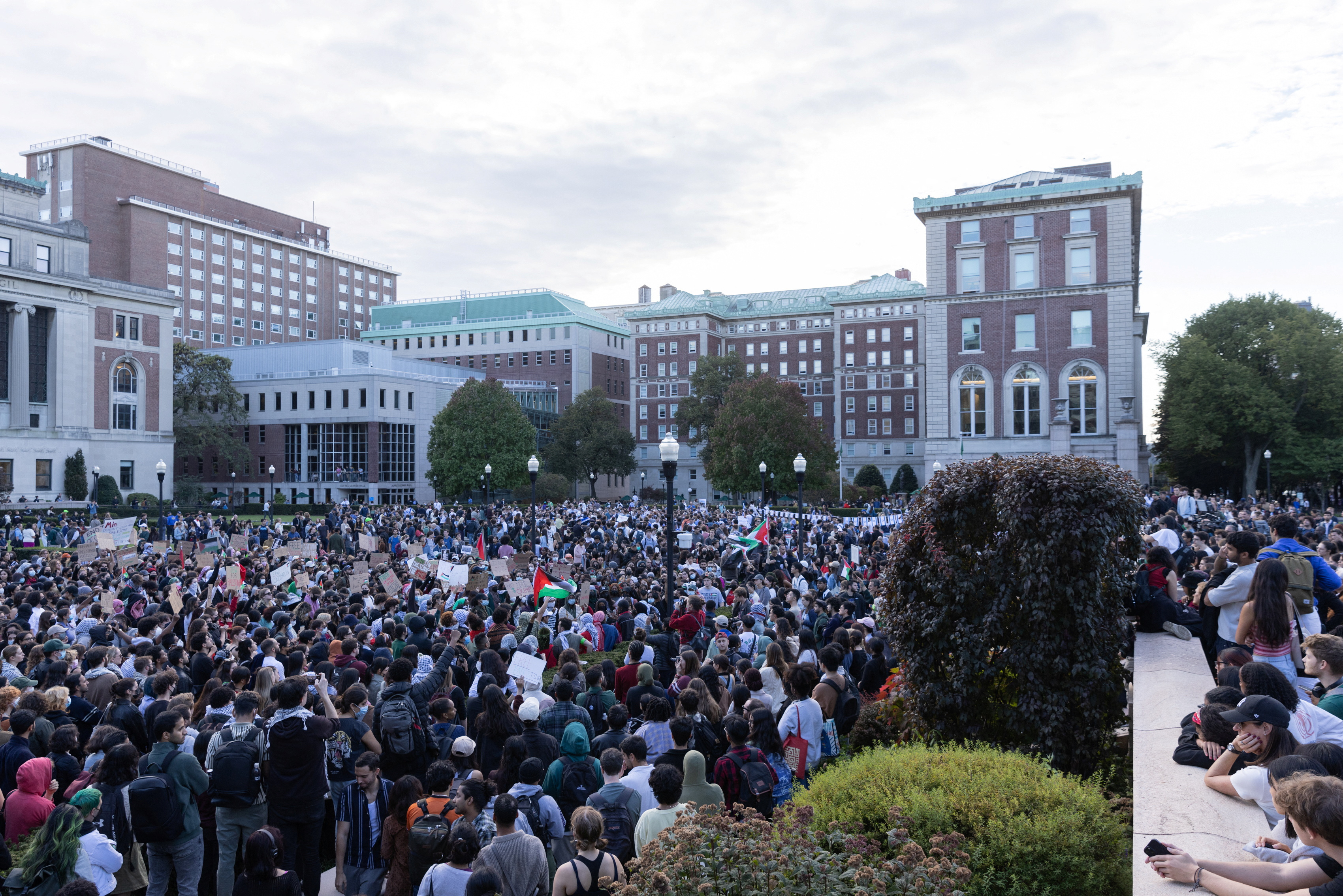
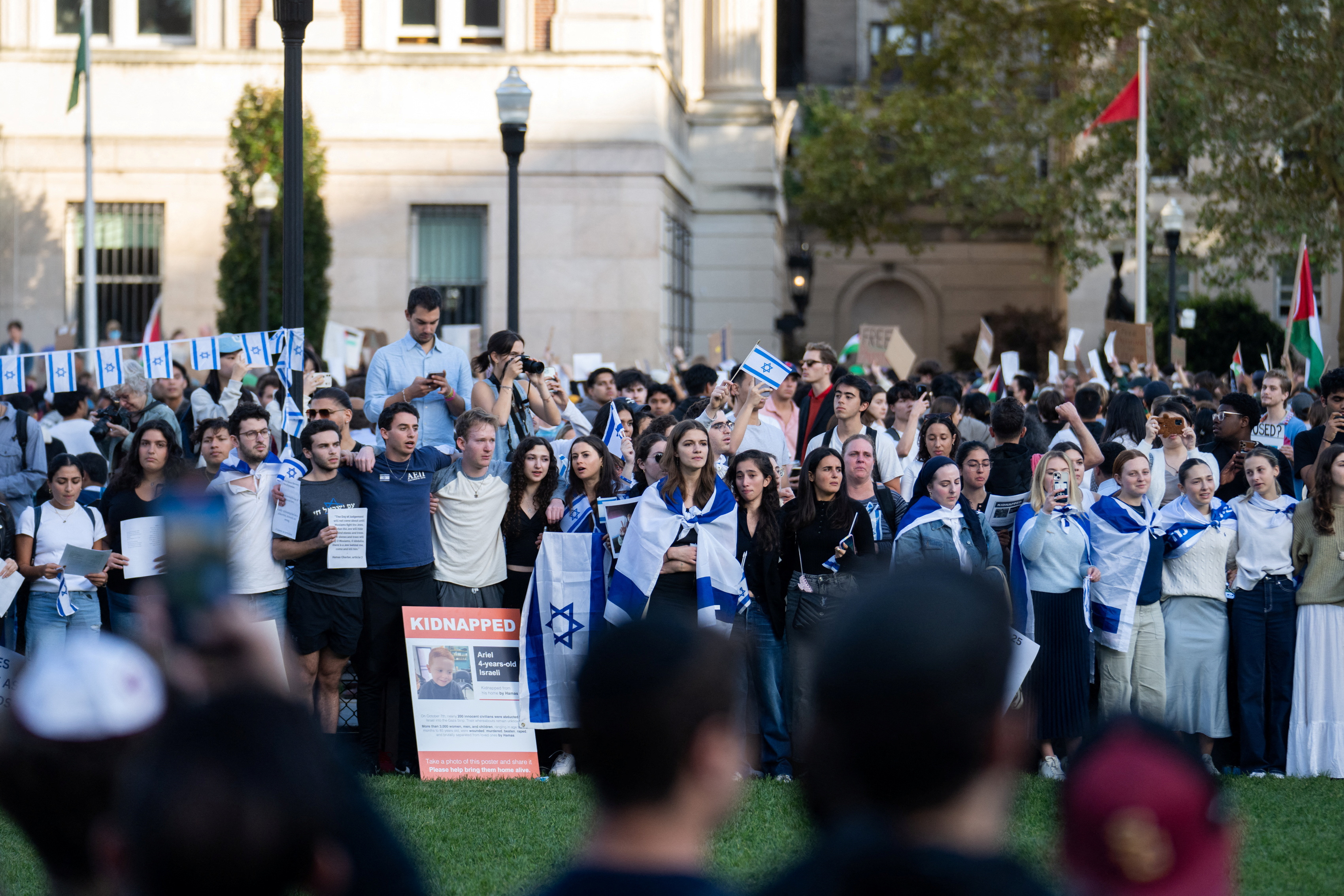
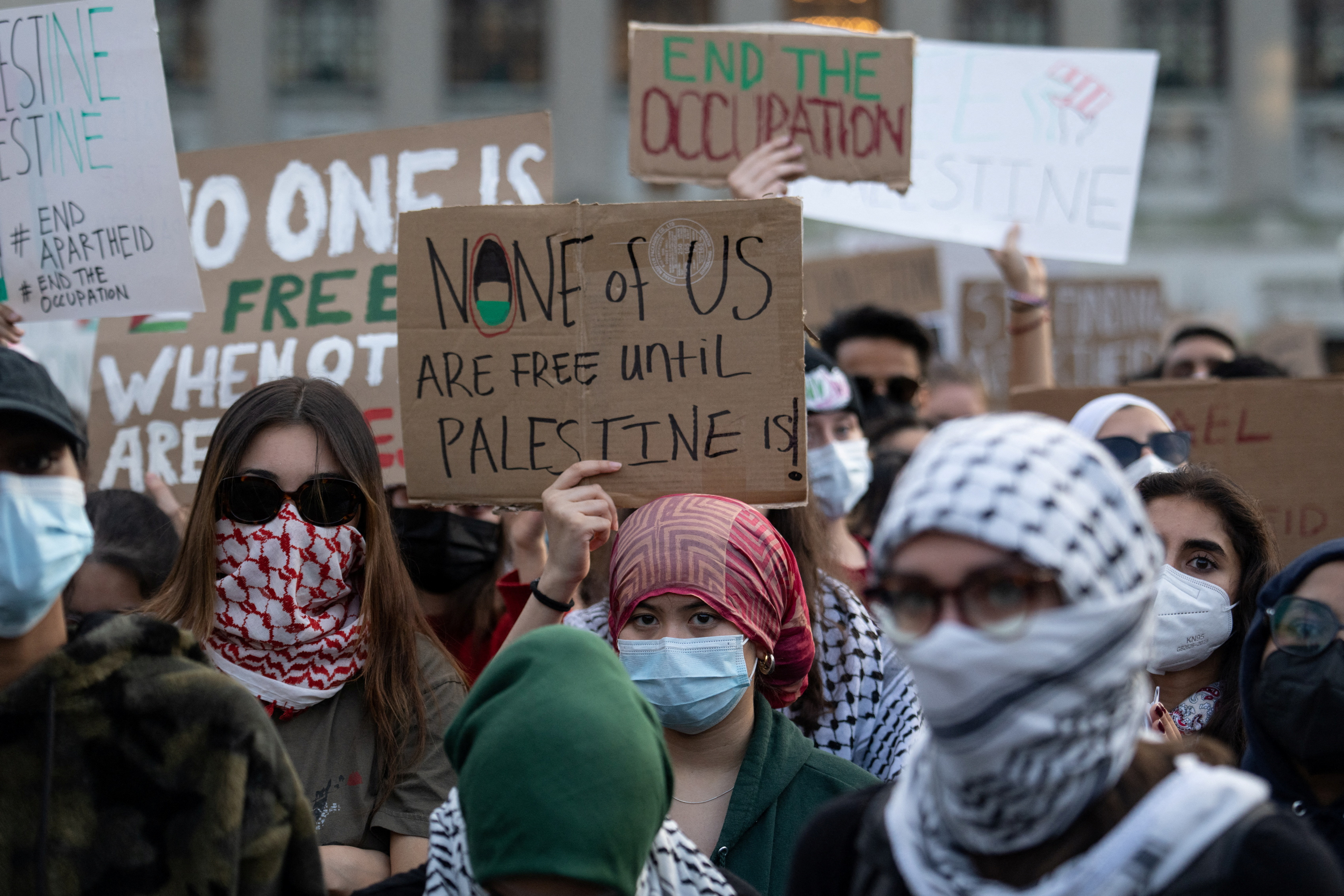



 Was sent by NID to Holland during the Boer War where he was to gather information on the armaments shipments being sent to South Africa. Used his innate ability for disguise to assume identities and assumed the role of a Russian arms purchaser. Under this guise, he put himself in a position to inspect the arms development at certain Dutch facilities. Once again, he returned to Britain with valuable information, impressing his superiors. He enjoyed similar success on a number of other assignments and became known within NID as one of the top agent within the agency.
Was sent by NID to Holland during the Boer War where he was to gather information on the armaments shipments being sent to South Africa. Used his innate ability for disguise to assume identities and assumed the role of a Russian arms purchaser. Under this guise, he put himself in a position to inspect the arms development at certain Dutch facilities. Once again, he returned to Britain with valuable information, impressing his superiors. He enjoyed similar success on a number of other assignments and became known within NID as one of the top agent within the agency. Was brought into the Secret intelligence Service (later known as MI6) in 1909 and served under Captain Mansfield Smith-Cumming. While SIS and NID were pleased with Reilly’s capabilities and results, Smith-Cumming said of Reilly “[H}e is a man of indomitable courage, a genius as an agent, but a sinister man who I could never bring myself wholly to trust.”
Was brought into the Secret intelligence Service (later known as MI6) in 1909 and served under Captain Mansfield Smith-Cumming. While SIS and NID were pleased with Reilly’s capabilities and results, Smith-Cumming said of Reilly “[H}e is a man of indomitable courage, a genius as an agent, but a sinister man who I could never bring myself wholly to trust.” Was assigned a new mission at the behest of British Prime Minister David Lloyd George. With the Russian government in tatters (after the overthrow of Czar Nicholas) Alexander Kerensky had taken control of the government as the new Prime Minister and was struggling to keep Russian in the fight of World War I. Ultimately, the Bolsheviks overthrew the Russian government and under the revolution’s leader Vladimir Lenin, signed a peace treaty with the Germans in 1918. Reilly, in cooperation with Robert Bruce Lockhart, the British general counsel to Russia, attempted to overthrow the new Russian (Bolshevik) government in order to bring Russia back into the war.
Was assigned a new mission at the behest of British Prime Minister David Lloyd George. With the Russian government in tatters (after the overthrow of Czar Nicholas) Alexander Kerensky had taken control of the government as the new Prime Minister and was struggling to keep Russian in the fight of World War I. Ultimately, the Bolsheviks overthrew the Russian government and under the revolution’s leader Vladimir Lenin, signed a peace treaty with the Germans in 1918. Reilly, in cooperation with Robert Bruce Lockhart, the British general counsel to Russia, attempted to overthrow the new Russian (Bolshevik) government in order to bring Russia back into the war. In truth, the Trust a front group, created by the Bolsheviks under the guidance of Feliks Dzerzhinsky (OGPU). Months later, Reily was introduced to “Trust” members and led him also going to Russia to meet with the Trust’s council leaders. Upon crossing the Finnish border, he was arrested on February 27, 1925 and taken to Lubyanka Prison where he was interrogated.
In truth, the Trust a front group, created by the Bolsheviks under the guidance of Feliks Dzerzhinsky (OGPU). Months later, Reily was introduced to “Trust” members and led him also going to Russia to meet with the Trust’s council leaders. Upon crossing the Finnish border, he was arrested on February 27, 1925 and taken to Lubyanka Prison where he was interrogated.
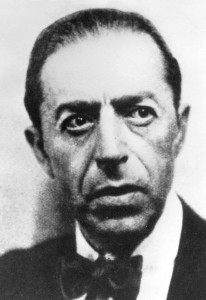
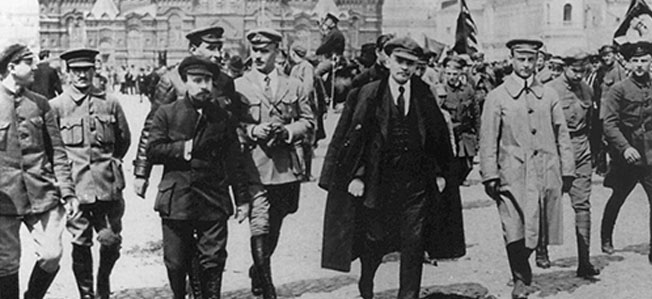


 image/jpeg
image/jpeg 